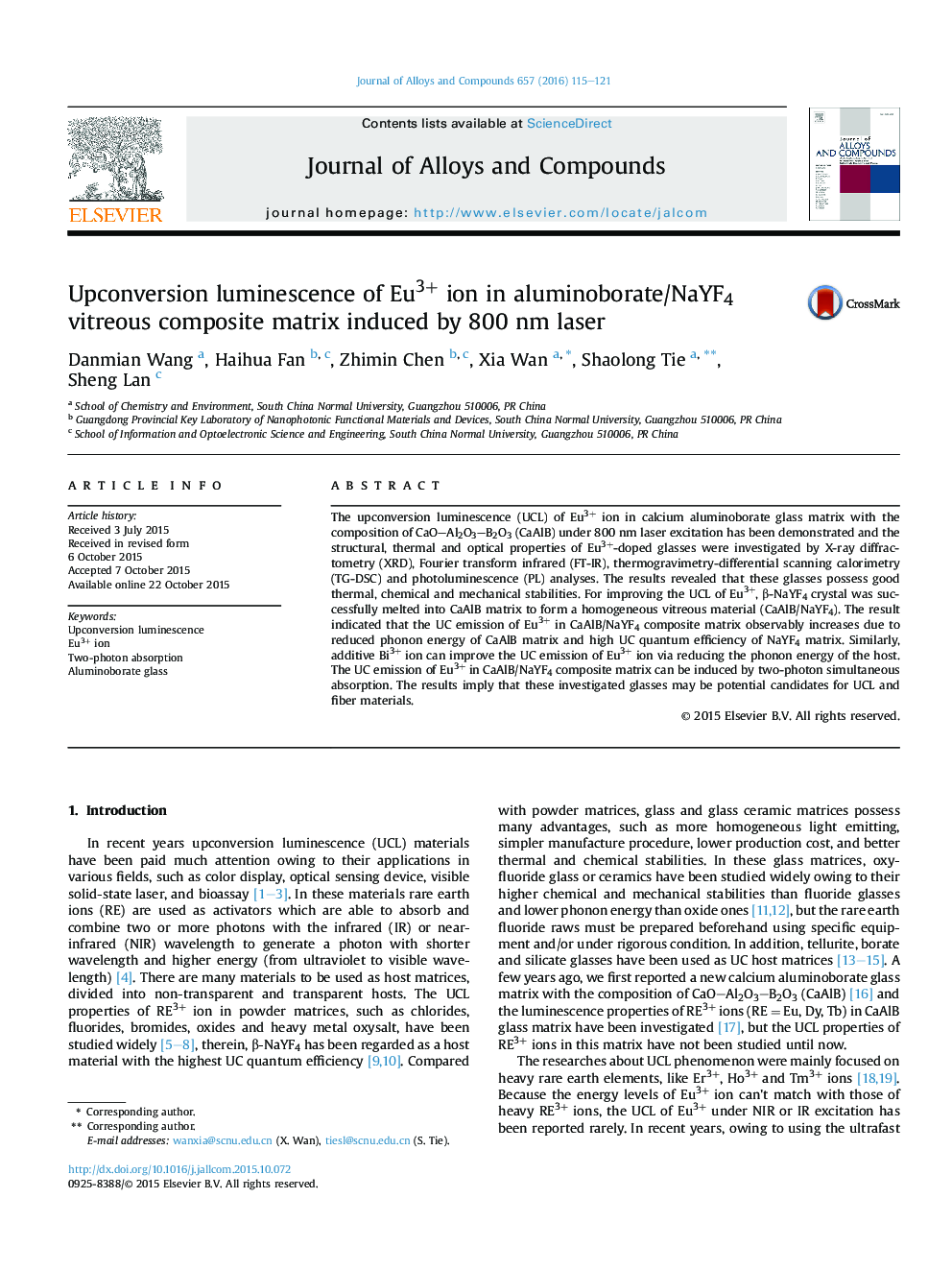| Article ID | Journal | Published Year | Pages | File Type |
|---|---|---|---|---|
| 1607301 | Journal of Alloys and Compounds | 2016 | 7 Pages |
•The upconversion luminescence of Eu3+ ion in calcium aluminoborate glass was demonstrated.•β-NaYF4 crystal was melted into aluminoborate matrix to form a homogeneous vitreous material.•The existences of β-NaYF4 and Bi3+ ion can enhance the upconversion luminescence of Eu3+.•The UC emission of Eu3+ in glass matrix can be induced by two-photon simultaneous absorption.
The upconversion luminescence (UCL) of Eu3+ ion in calcium aluminoborate glass matrix with the composition of CaO–Al2O3–B2O3 (CaAlB) under 800 nm laser excitation has been demonstrated and the structural, thermal and optical properties of Eu3+-doped glasses were investigated by X-ray diffractometry (XRD), Fourier transform infrared (FT-IR), thermogravimetry-differential scanning calorimetry (TG-DSC) and photoluminescence (PL) analyses. The results revealed that these glasses possess good thermal, chemical and mechanical stabilities. For improving the UCL of Eu3+, β-NaYF4 crystal was successfully melted into CaAlB matrix to form a homogeneous vitreous material (CaAlB/NaYF4). The result indicated that the UC emission of Eu3+ in CaAlB/NaYF4 composite matrix observably increases due to reduced phonon energy of CaAlB matrix and high UC quantum efficiency of NaYF4 matrix. Similarly, additive Bi3+ ion can improve the UC emission of Eu3+ ion via reducing the phonon energy of the host. The UC emission of Eu3+ in CaAlB/NaYF4 composite matrix can be induced by two-photon simultaneous absorption. The results imply that these investigated glasses may be potential candidates for UCL and fiber materials.
